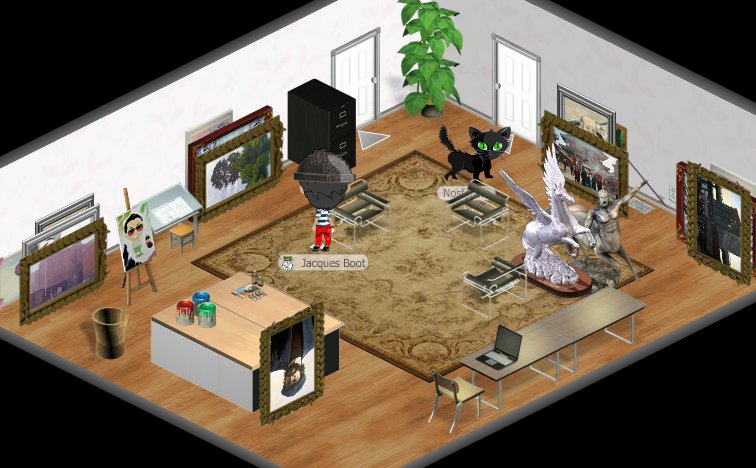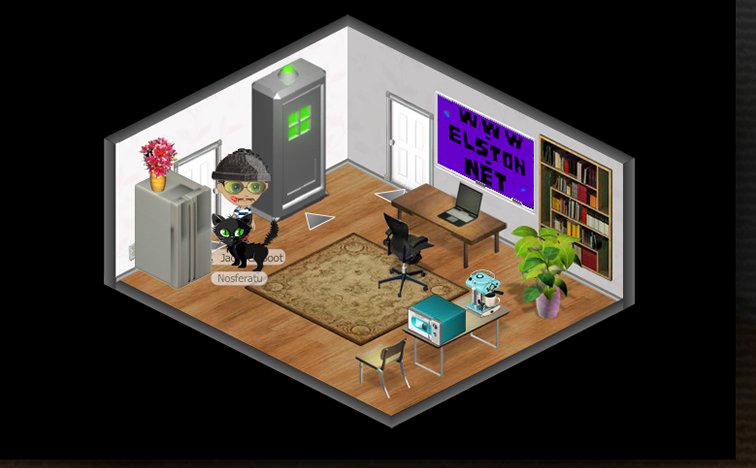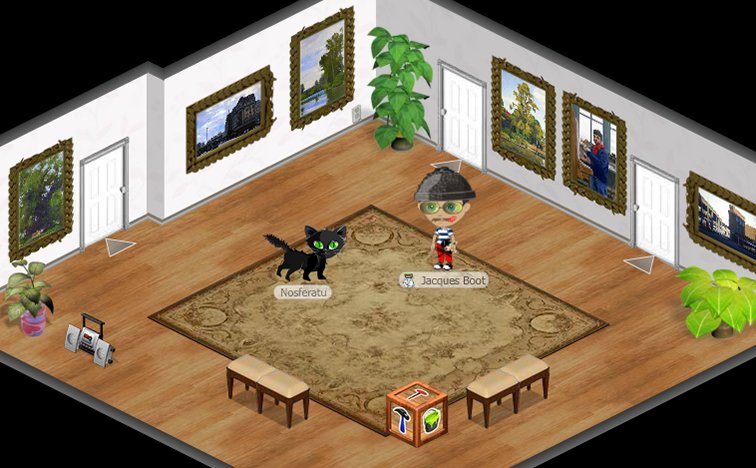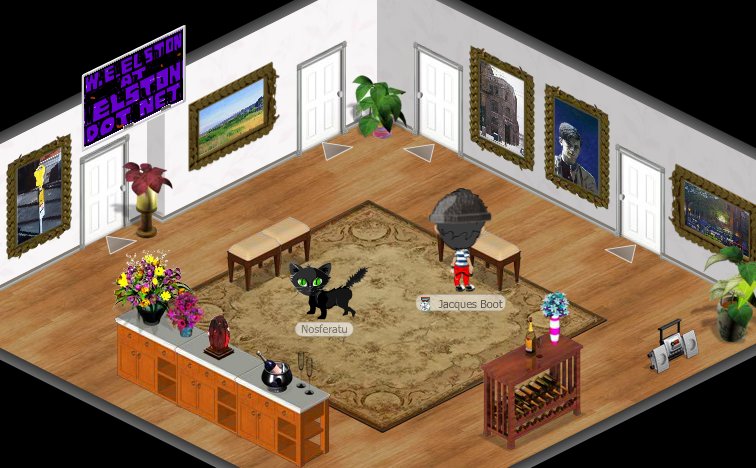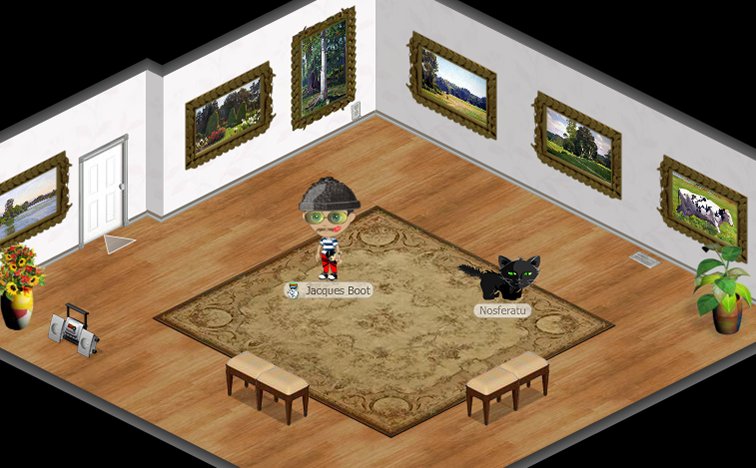In YoVille the user has a default apartment, which can be appointed with furniture, appliances and décor, purchased with YoCoin and YoCash (which can either be bought with real cash, or earned by “checking in” to work at the YoVille factory.) One of the most interesting things about YoVille is the avatars that are assigned to users. They can be dressed in clothes and costumes, and the user can expand one’s wardrobe by going to the Fashion Clothing Store. The users can also chat with each other in real time, and gather together in various public locations, or visit each others apartments and homes. A user can also purchase additional homes, from beat up trailers to sultan’s palaces or haunted castles.
A wide variety of objects and costumes can be purchased. These items are available for a brief period of time, replaced by other items that are periodically made available. These include themed objects like Japanese furniture and torture chamber appliances, and many others. Expired items are often traded for YoCoin, which creates an economy that is quite extensive. Rare YoVille objects are traded for astronomical amounts of YoCoin, at auctions that are jam-packed with avatar-bidders.
After purchasing my first new house in YoVille, an abandoned police station, I decided to turn my default apartment into an art gallery. There were frames available for purchase that could present an image uploaded in jpeg format. I was able to use the entire apartment to create three painting showcase rooms, a room for preparation and shipping, an office and a bathroom. I scheduled an opening reception, and invited YoVille members via the YoVille bulletin board. The reception was a success, with hundreds of avatars attending. I met many users from all over the world, and I was also able to drive traffic to my website.
The whole project was done in fun, and fun it was. I think that YoVille was one of Zynga’s more innovative games, primarily because of its open-ended nature, and the ability for users to create communities, events, environments and virtual economies. I was able to trade YoVille paintings for rare YoVille items that had been long discontinued. I also believe that the project was suggestive of an interesting virtual future, as the technology becomes more sophisticated. Such a virtual gallery, with avatars, could be used as an adjunct to a real life exhibition, for advertising an actual show, as well as presenting work to far-flung clients. Who knows where we might end up. It is indeed a Brave New World.
